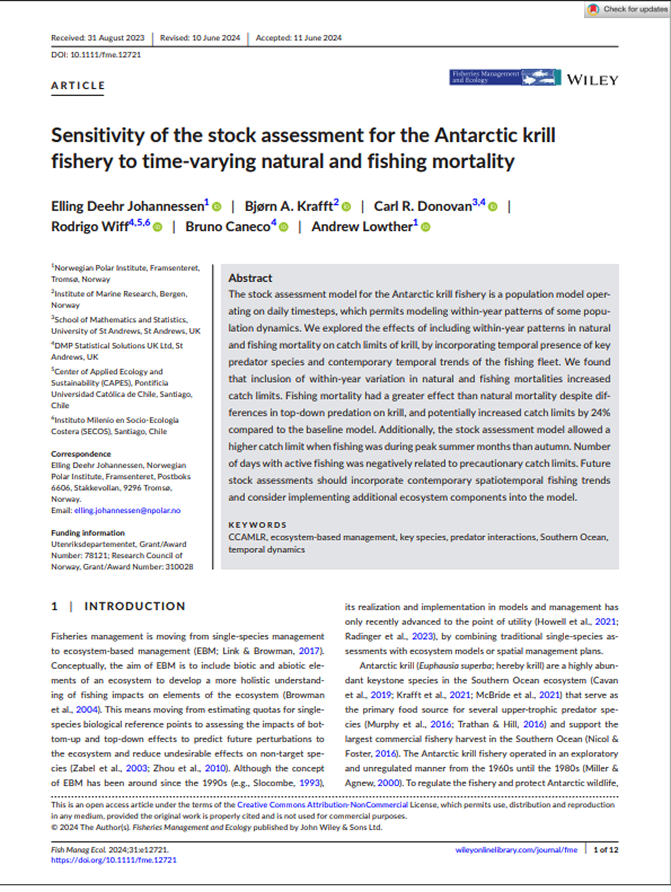Antarctic ecosystem
Fisheries management
Biomass
Climate
Krill (Euphausia superba)
A review of post-whaling abundance, trends, changes in distribution and migration patterns, and supplementary feeding of Southern Hemisphere humpback whales
Summary
This comprehensive analysis examines 58 research studies spanning from 1989 to 2022 that track the recovery of Southern Hemisphere humpback whales following decades of commercial whaling. Between 1903 and 1973, approximately 216,000 humpback whales were killed by commercial whaling operations, severely depleting populations across the Southern Hemisphere.Current population estimates indicate strong recovery, with about 114,422 individuals now distributed across seven distinct breeding populations labeled as stocks A through G. This represents roughly 80% recovery toward pre-whaling population levels. The largest population is found along Western Australia (Stock D), while the east coast of South America (Stock A) holds the second-largest numbers.Recovery rates differ markedly between regions, with the fastest growth occurring along South America's east coast (7.6-10.7% annually) and in waters off Mozambique and southern Tanzania (7.4-8.8% annually). The research reveals important gaps in current knowledge and emphasizes the need for consistent research methods across studies. Notably, scientists have observed humpback whales feeding in new areas beyond their traditional feeding grounds, likely adapting to climate-related shifts in prey distribution and availability.

1
This map shows the distribution of Southern Hemisphere humpback whale populations across seven breeding stocks (A-G), with colors linking each stock's breeding areas to their corresponding feeding grounds in the Southern Ocean. The Southern Ocean is divided into six management zones (I-VI) marked by dashed lines, with some zones subdivided into western and eastern sections shown by dotted lines. The color-coding reveals how each whale population migrates between specific tropical breeding areas and particular Southern Ocean feeding zones.Key Findings
1
Approximately 114,422 humpback whales now exist across the Southern Hemisphere, representing about 80% of numbers before commercial whaling began 2
Western Australia hosts the most abundant stock with roughly 20,337 individuals recorded in 2015 3
East coast South America shows the highest annual growth rates at 7.6-10.7%, followed by Mozambique waters at 7.4-8.8% 4
Four whale stocks now feed in new areas outside their traditional feeding zones, likely adapting to changing ocean conditions 5
Evidence shows whales are expanding their range and returning to historical habitats they previously occupied before whaling 6
Important knowledge gaps persist for several whale sub-populations, limiting comprehensive understanding of recovery patterns 7
Current conservation classifications require updating to account for climate change effects on whale populations and their marine environment

